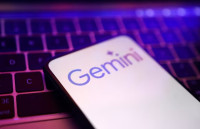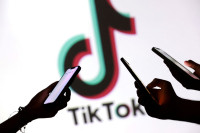Science & Technology
What you need to know about open-source software
Open-source software at its core is about collaboration among developers: it gives anyone on the internet access to an application’s code on the backend..jpg&w=900&height=601)
Prajesh SJB Rana
After WhatsApp’s privacy debacle, many of the app’s users, in a mass exodus, downloaded Signal. Signal, while offering better privacy, is also an open-source software. Open-source is a type of license that a developer can opt for to make the source-code behind their app free and publicly available to anyone on the internet to use, modify and release. The fact that Signal is open-source does give the app more credibility, but for many the same fact raised a lot of questions. While some questioned the app’s security, based on the source code being open, others pondered on the ethics around software ownership and sale.
Open-source software at its core is about collaboration among developers. Open-source software engineers post their code online because they want other developers to modify it and make it better. The most famous example being the open-source operating system Linux and its plethora of derivations and distributions. If an app is open-source, then anyone on the internet can gain access and understand how an application is coded on the backend. But by nature of the code staying free, even if hackers find a potential bug they could exploit, there will probably be many white-hat hackers—good-guy hackers, who find security vulnerabilities for the sake of reporting them to the developers—who’ll find those vulnerabilities too. And since the code is open for all, community-based patches and bug fixes can be developed and distributed very fast. This ensures that apps stay under constant community surveillance too and any nefarious data transfers or privacy breaches can be immediately identified by a community of online coders.
But one of the main benefits of open-source software, because of the nature of the practice, is that they will always be free. Open-source code means anyone with a little bit of code compilation experience can make an executable out of the source code and put it up for free. Open-source software also have many developers who volunteer their time to update, maintain and support their favourite piece of open-source software. In a nutshell, open-source software are and will always be free and they benefit from a massive online community of coders, poking and prodding them for security and privacy issues. Sounds great! Should you sign up?
Well, not all’s fine and dandy in open-source land. While you would be more secure and supporting a community of developers who believe in free software and collaboration, the quality of open-source software tends to be hit-or-miss to say the least. While there are some excellent examples of good open-source software like Ubuntu, LibreOffice, GIMP and Blender, not all open-source software tends to be good. Also, because bigger software companies have hired professionals looking into all aspects of a software’s design, development, marketing, etc, open-source software tend to be developed by independent developers, sometimes single-handedly, who don’t have access to the resources that many big software companies do. This means they usually need at least a moderate amount of troubleshooting to get everything to work right and you will see the occasional bugs pop-up from time to time.
Not everything is a buggy mess, however, and there are excellent examples of some quality software that you could use to support the community. Mozilla Firefox is an excellent browser that is completely open-source with a special focus on privacy protection. Google Chrome technically isn’t open-source even though the core that it’s made on is: Google’s Chromium project is an open-source version of Chrome without all the Google bells-and-whistles. Mozilla, on the other hand, is owned by a foundation that is built around privacy protection supported by open-source software. Mozilla, apart from Firefox, also develops Thunderbird, an email client that replaces Apple Mail, Outlook and Windows Mail. Thunderbird is also open-source and one the most popular and beloved email clients.
On the productivity side, LibreOffice is an excellent office suite. Much like Microsoft Office, LibreOffice comes fully equipped with a word processor, a spreadsheet editor, a presentation creator, and a database manager. LibreOffice is also designed well and looks great with a top aligned ribbon design which looks good albeit very similar to Office. LibreOffice is also open-source and free. Celtx is also a great open-source scriptwriting tool that replaces Final Draft on the Mac and Windows systems.
While there are plenty of options for office and home users, creative professionals are where the shortcoming in open-source software actually becomes more evident. All creative professionals who use Adobe applications will complain about them a lot, but would never trade Adobe applications for any open-source option. This is not because open-source software in these categories are bad; in fact, over the years programmes like GIMP, Inkscape and Blender have become powerful alternatives to their Adobe counterparts. GIMP is an open-source image processor, while Inkscape is a vector illustration tool and Blender is used for 3D modelling. All of these programmes have grown over complexity and feature-set and in 2021, they’re very close to what Adobe programmes can do.
Regardless to say, Adobe remains king when it comes to creative production software. Not only owing to the quality of these products, each individual software works seamless with each other and their files. Many creative professionals will be working on various different programmes for specific tasks and with Adobe’s catalogue of software, they usually have a well-designed, developed and professional software for all of these tasks; having different components play together well is paramount in creative workflows. Although Adobe applications are great, they don’t come cheap and for $52.99/month, they better be perfect (which, sadly, they are not). Which is why even though I encountered some bugs, crashes and freezes with GIMP and Inkscape, they’re more understandable when it comes for free.
There are plenty of smaller open-source software like Signal out there too and if you look around a little, you’ll find open-source alternatives for almost all of the applications you use. You might even be using a few open-source applications right now without even realising it.




 11.12°C Kathmandu
11.12°C Kathmandu











%20(1).jpg&w=300&height=200)

